On ski traverses we prefer to be on skis. But, that’s not always how it goes. Sometimes the snow runs out. In those cases, when it’s a long distance between snow patches, a packable and lightweight pair of sneakers can be your best friend. Recently, the Arc’teryx Norvan SL 3 running shoe was a good friend to have.
Know this: mistakes were made. Also, know this: we are not fools most of the time. Although experienced with long-haul ski traverses, one would have thought that in the planning stages, wisdom would have reigned. This, however, was not the case.
Some refer to skinning as walking. Some reserve the term walking to the strict definition of the term—putting one foot in front of the other while wearing some sort of foot covering other than ski boots. That’s where we’re landing here, the walking where you wear a hefty load with the skis/splitboard A-framed to the pack and the ski/riding boots secured to the bindings. And you proceed one foot in front of the other.
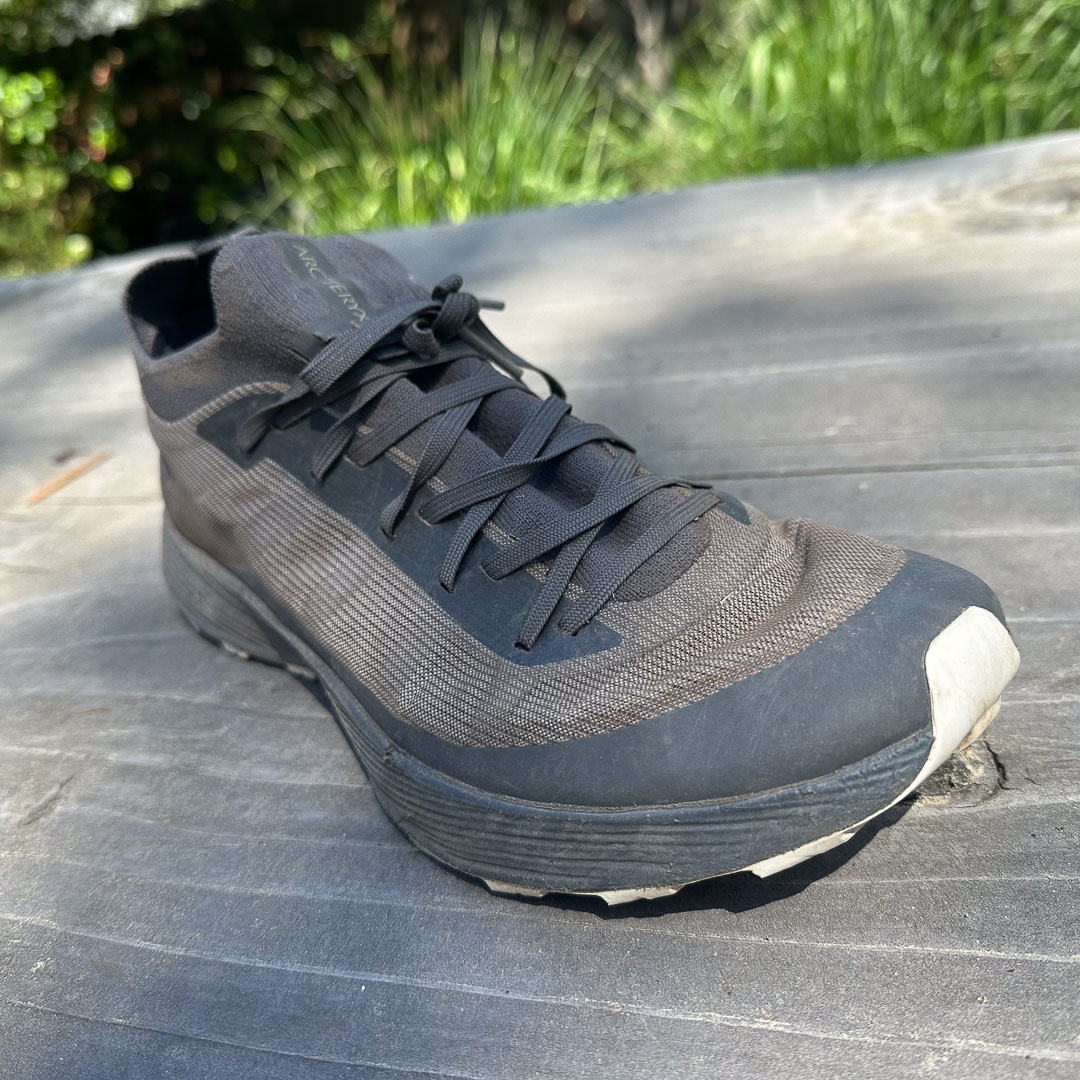
The caveat is that many of us have walked mile upon mile in ski boots once the snow peters out. With high range-of-motion low-friction boots, 5-10 miles is doable. Some examples might be boots like Scarpa’s F1 XT or LT or older Alien RSs, Dynafit Blacklights or Xs, Tecnica ZG Peaks, or Atomic Backlands (this is not an exhaustive list). Things begin to look ugly when one expects multiple days of walking in ski boots or even, for that matter, a long single-day walk out.
Maybe you feel me here? In our planning for a multi-day ski traverse this spring, we got a little cocky and decided not to carry sneakers. The operative word here is planning.
We parked a car in Kelly, Wyoming, expecting to end our traverse there. (We ended the traverse about 15 miles northeast of Kelly as the bird flies). Adam Fabrikant was tasked with looking after the car.
Our proposed route included crossing some (read mile after mile) high steppe sage-and-aspen country. Terrain that on a digital map seems benign compared to the scoured high alpine. In reality, this lower-land terrain is/was a rough go, especially considering the groveling.
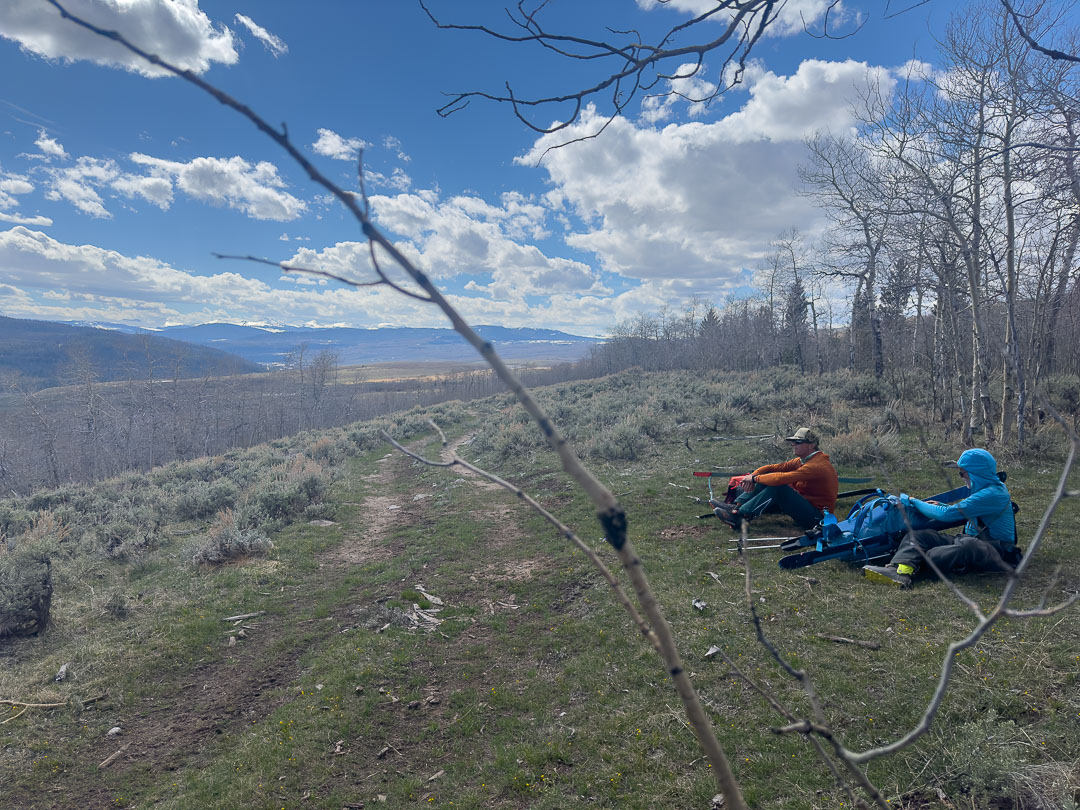
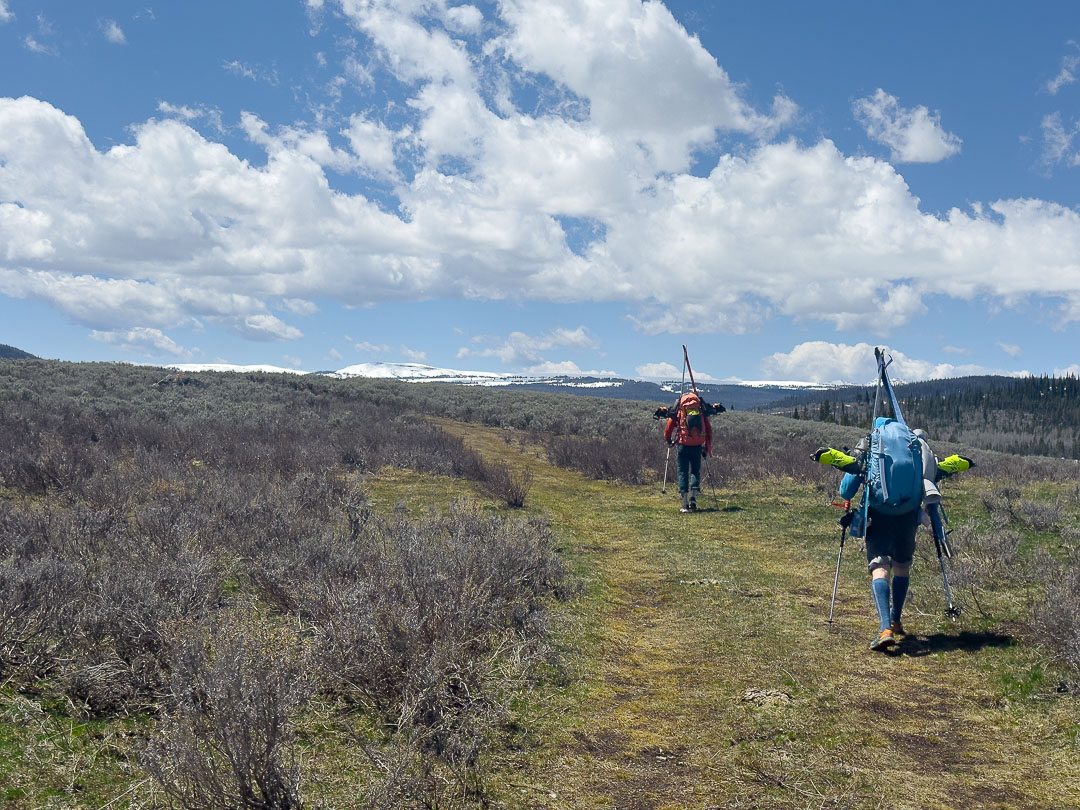
My pre-trip conversation with Adam began with something like this:
Adam: “So, are you folks bringing sneakers?”
Me: “Nah. It’s only expected to be an 18-mile walk from snow patch to snow patch.”
Adam: “That’ll be a brutal walk in ski boots. You should bring sneakers.”
Me: “I’ve walked in ski boots plenty. Thanks, though, but I think we are good.”
Adam: “Right. You should bring sneakers.”
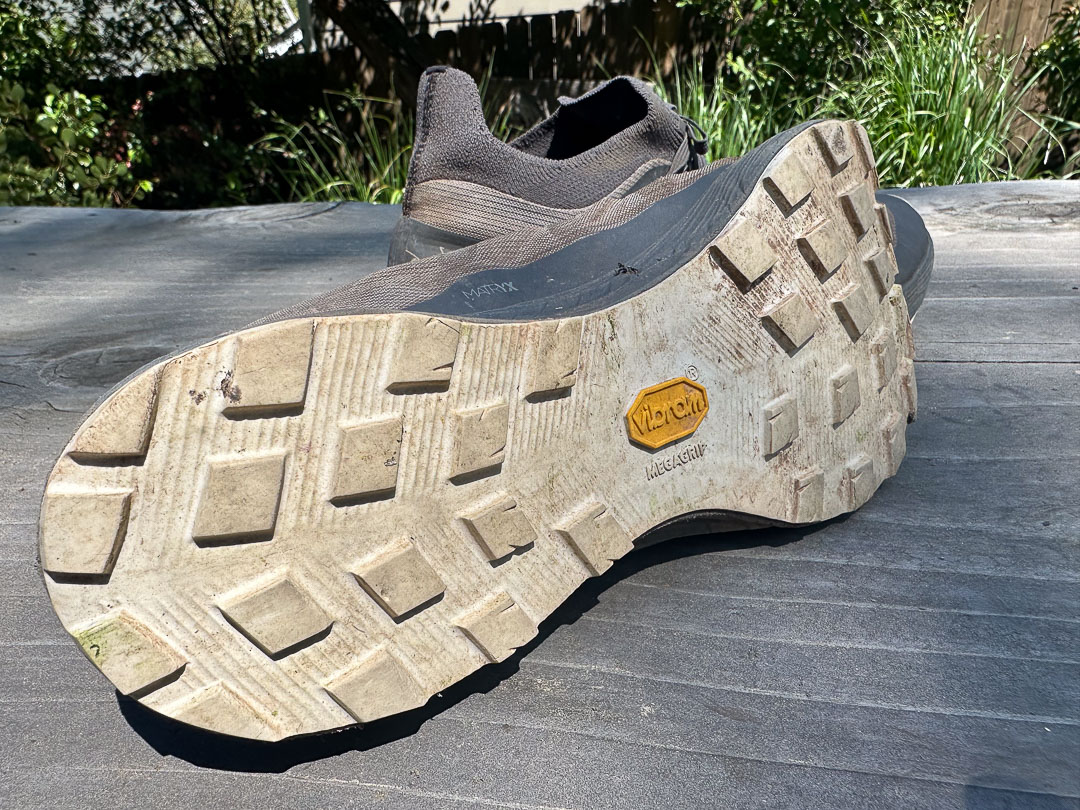
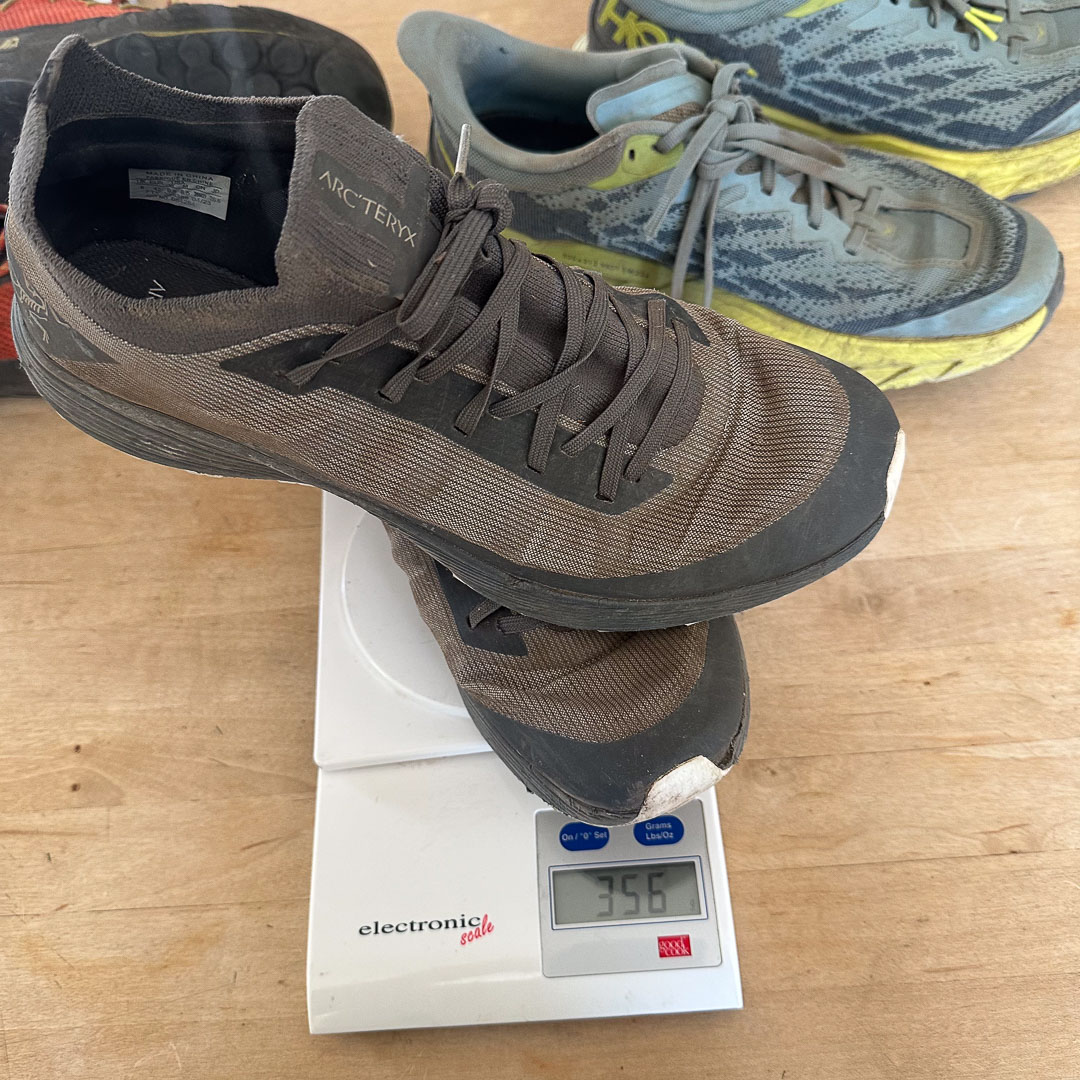
Adam spends more time walking and skiing in touring boots than anyone I know. So he should know. And, it turns out, he does know. Although he is a few decades our junior, he is wiser than our crew.
Anyhow, he walks into a mudroom and grabs a fresh pair of Arc’teryx Norvan SL 3 sneakers. He claims they are too big for him. They are, however, a size too small for me: a EUR 42, US 8.5, I’m a solid 9.5. I slip on the Norvan SLs with a pair of ski socks, and they seem tolerable for a day or two of walking with a backpack weighing 29 or 30 pounds.
Adam says something like, “Take ’em.”
There’s no vacillating once I sense their weightlessness. “I will take the shoes…they feel damn light.”
Right then and there, I texted my partners with a photo of the just-out-of-the-box Norvan SLs, saying something like, “I’m bringing sneakers. Adam gave me a very light pair…find some light shoes….”
****
We sang Adam’s praise through willows, marshes, isothermic snow, sage, thickets, bogs, miles of elk trail, and some lush and grassy decommissioned roads. Our feet are forever grateful. Our beings are eternally grateful. The sneakers, in hindsight, were critical to making our trip trend towards Type I fun and not Type II.
The Norvan SL 3s I snagged weigh a combined 356g—that’s with, I bet, 10g/shoe of embedded sand/dust post-trip. As far as I can tell, these are minimalist running shoes. They have a sewn-in (unremovable) insole, a mesh upper, some rubber reinforcement over the toe, a semi-elastic ankle closure, laces, no real tongue, a spot to clip the shoes to a carabiner if need be, and a Vibram MEGAGRIP outsole.
In short (which I get; I haven’t been), these sneakers are comfortable enough for walking with my 30+ pound pack across some very rugged terrain. I wouldn’t expect these lightweight shoes to survive a week-long trek across and over glacial moraines, but for my purposes, they were durable enough and just comfortable enough when sized down. This minimalist sneaker is perfect for those touring missions requiring off and on trail walking. From a bulk/volume perspective, the Norvan SL 3s are somewhat easy to pack—they’ll fold a bit and bend into a pack’s voids. They remain low profile-ish when secured to the pack’s exterior.
For my preferences, I would not be running in these—they feel more like a racing flat. And I’m keen on more plush running shoes with ample cushion and a wider, more stable platform. Think Hoka Speedgoat 5. For huffing and puffing to or from the snow—the Norvan SL 3s slay.
The key reason, besides stubbornness, for me not planning on bringing sneakers is that previously, I did not have access to light sneakers. My options were (all weights measured without insoles as I would have used my ski boot insoles, which are blue Superfeet):
La Spo TX3 approach shoe: 690g. Too bulky, too heavy.
Hoka Speedgoat 5: 544g. Passable weight, too bulky.
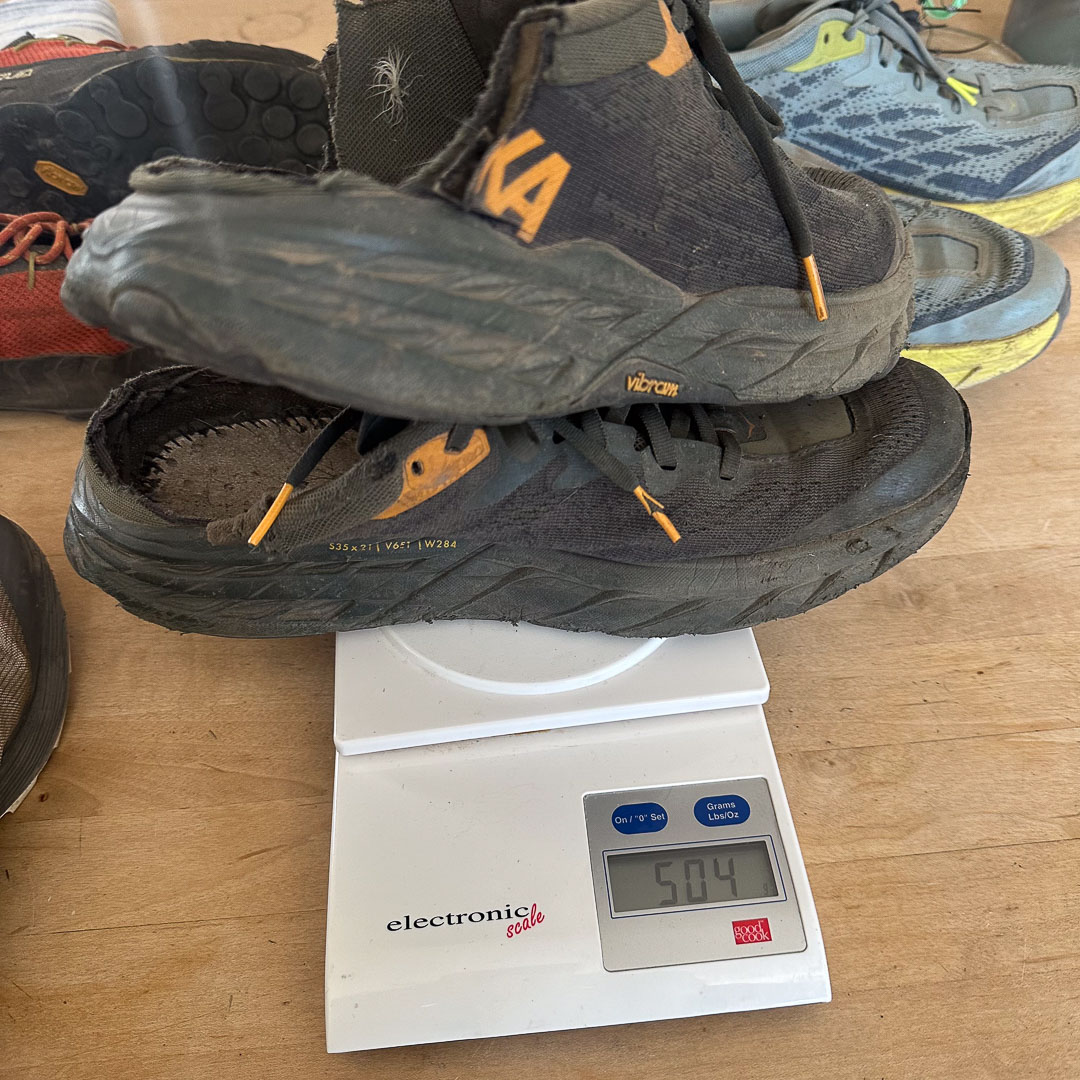
Custom X-treme clog (Speedgoat 5): 504g. Passable weight, supreme style, insufficient support with pack.
Salomon Sense Ride 4: 578g. Trending towards too heavy, and these are my child’s shoes, and I would have had to ask permission and forgiveness.
We also considered Crocs. But you know, Crocs. Kelly brought a pair of Scarpa Spins (sans insole) which are an unconfirmed ~504g with insoles (size 42).
In the end, 356g/pair—that’s 178g/sneaker—just isn’t much considering the amount of walking we did, which totaled roughly one and a half days. Again, thank you Adam for your terse you-should-take-sneakers wisdom.
The Norvan SL 3 can be found on the Arc’teryx outlet site for ~$100.00. The shoe retails new for $160.00 and comes in men’s and women’s models.
Please let us know if folks have ideas for lightweight, semi-durable running shoes. It’d be good to know what’s out there.





Leave a Reply
You must be logged in to post a comment.